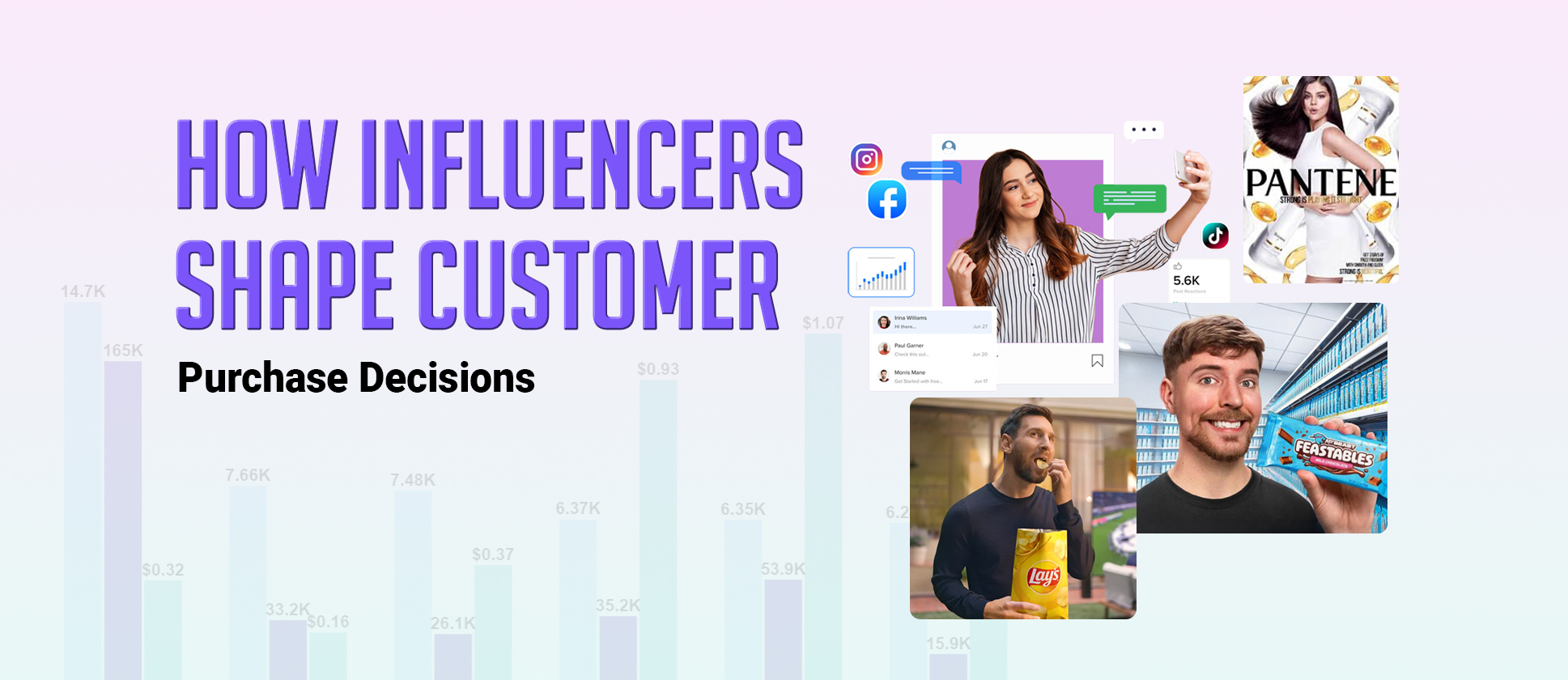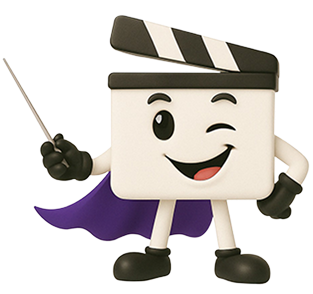When Cristiano Ronaldo casually moved two Coca-Cola bottles away from himself during a Euro 2020 press conference and said “Água” (water), he probably didn’t expect to wipe $4 billion off Coca-Cola’s market value. But that’s exactly what happened, and it perfectly demonstrates how social media influencers have fundamentally changed the game when it comes to consumer behavior. This isn’t just about celebrity endorsements anymore. We’re talking about a complete transformation of how people discover products, make purchasing decisions, and interact with brands across every corner of the internet.
From mega-celebrities like Taylor Swift causing economic shifts with her tour announcements to everyday TikTok creators driving teenagers to buy everything they recommend, the influence is real, measurable, and absolutely impossible to ignore. The social media influencers’ impact in shaping purchase intent has become so powerful that brands are basically reshuffling their entire marketing budgets to keep up.
Companies that understood this early (like the ones working with platforms like ShortVids to create Compelling Video Content that amplifies influencers and consumer behavior patterns) are already seeing the benefits, while others are scrambling to catch up with this new reality of digital marketing.
Why Influencer Impact Holds Power Over Consumer Choices
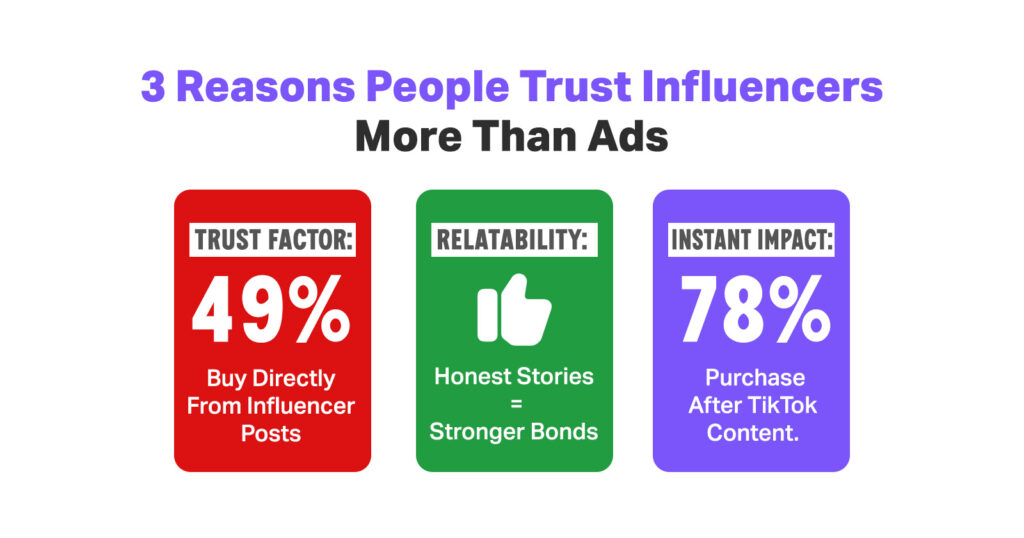
The impact of influencers on consumer behavior goes way beyond simple product placement because people actually trust these creators more than traditional advertisements. The transformation didn’t happen overnight, but it definitely feels that way. Social media influencers have basically become the new word-of-mouth marketing, except now that word reaches millions of people instead of just your neighbor.
According to The 2024 Influencer Marketing Report, 49% of all consumers make daily, weekly, or monthly purchases because of influencer posts, with 30% trusting creators more today than they did previously. This shift represents a fundamental change in how people discover and evaluate products before making purchasing decisions through modern influencer marketing strategies.
Trust Factor
When someone sees a TV commercial, they automatically know it’s Paid Advertising. But when their favorite YouTuber mentions a product while doing their morning routine, it feels like a genuine recommendation from a friend. This authenticity factor is probably the biggest reason why influencer marketing has become so effective at driving purchase intent, and influencers are working together to create seamless shopping experiences. This happens because modern consumers are definitely more skeptical of traditional advertising than previous generations.
Relatability Connection
Unlike polished celebrity endorsements, social media influencers often share their real experiences with products. The social media influencer’s impact on Authentic Storytelling has changed how brands approach customer relationships.
- They show the good, the bad, and sometimes the ugly truth about what they’re promoting.
- This transparency creates a stronger emotional connection with their audience.
- That connection translates directly into higher conversion rates when they recommend something.
This shift means brands now value authentic voices over perfect polish, trusting influencers to build genuine engagement and trust through honest storytelling.
For Example, Emma Chamberlain, an American creator. With 12.1 million subscribers, she often talks candidly about products she actually uses, ranging from skincare to coffee. Her unfiltered reviews and casual tone make her recommendations feel real, not scripted, and that’s why her audience listens.
Immediate Access
The beauty of modern Marketing lies in its immediacy. According to a recent survey, 78% of TikTok users reported buying a product after seeing it featured in creator or influencer content. Someone can watch a creator use a product, get excited about it, click the link in their bio, and purchase it within minutes.
This streamlined path from discovery to purchase has improved how quickly consumer trends spread and how fast products can go viral through strategic influencers and consumer behavior psychology.
Types of Social Media Influencers Drive the Most Sales
Not all influencers are created equal when it comes to driving actual sales. The landscape has improved to include several distinct categories, each with its own strengths and audience appeal. Understanding these different types helps explain why modern marketing has become such a dominant force in shaping consumer patterns across various industries.
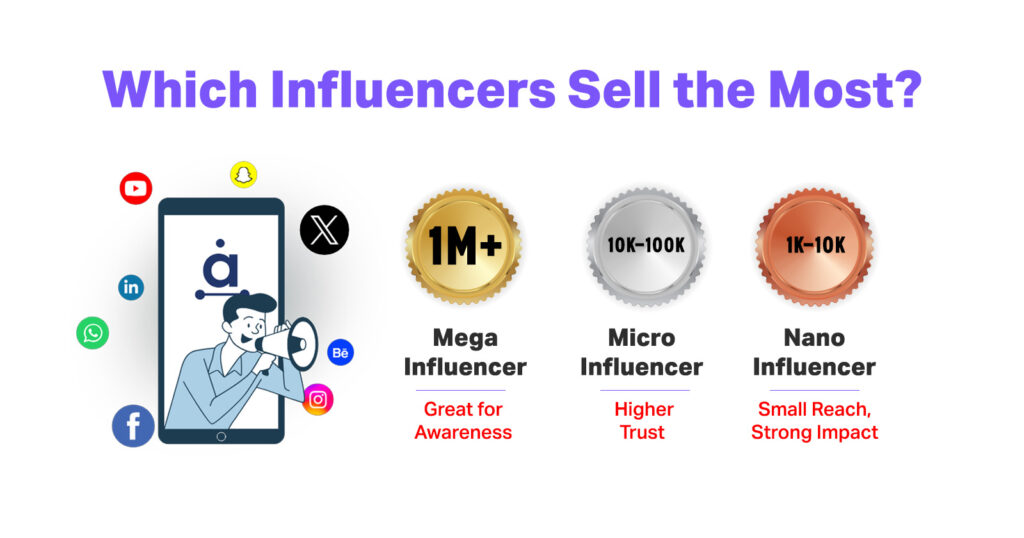
Mega-Influencers
When mega-influencers promote something, the reach is massive, but the engagement might be lower per follower compared to smaller creators. These are your household names, people like Selena Gomez, who built her billion-dollar Rare Beauty empire largely through her own social media presence.
Mega-influencers (1 M+ followers) often deliver massive reach but a lower engagement rate per follower, typically around 0.8% on platforms like Instagram. However, the sheer volume of people they can influence makes them incredibly powerful for brand awareness campaigns that demonstrate the impact of influencers on consumer behavior at scale.
Micro-Influencers
Creators with smaller but highly engaged followings (usually between 10,000 to 100,000 followers) often drive higher conversion rates than their mega-counterparts. A study from Zebracat reports that micro-influencer campaigns achieve conversion rates of 4.1%.
These creators are particularly effective at driving purchase intent and influencers working together because their recommendations feel like genuine advice from someone you actually know. Their audiences trust them more because the relationship feels more personal and authentic.
Nano-Influencers
The newest category includes everyday people with very small followings (1,000 to 10,000 followers) who have incredibly tight-knit communities. While their reach is limited, their influence over purchasing decisions within their specific audience can be surprisingly strong. Brands that use nano and micro-influencers typically see about 20% higher conversion rates than campaigns relying on larger influencers.
Brands are increasingly recognizing the value of working with multiple nano-influencers rather than putting all their budget toward one mega-influencer, creating diverse influencers and consumer behavior connections.
How Celebrity Endorsements Create Instant Market Impact
The speed at which celebrity influencers can move markets has reached almost ridiculous levels. When we look at examples like Ronaldo’s Coca-Cola incident or Taylor Swift’s impact on local economies during her concert tours, we’re seeing the real-time power of social media amplification combined with celebrity influence, showing true market power.
The Ronaldo Effect
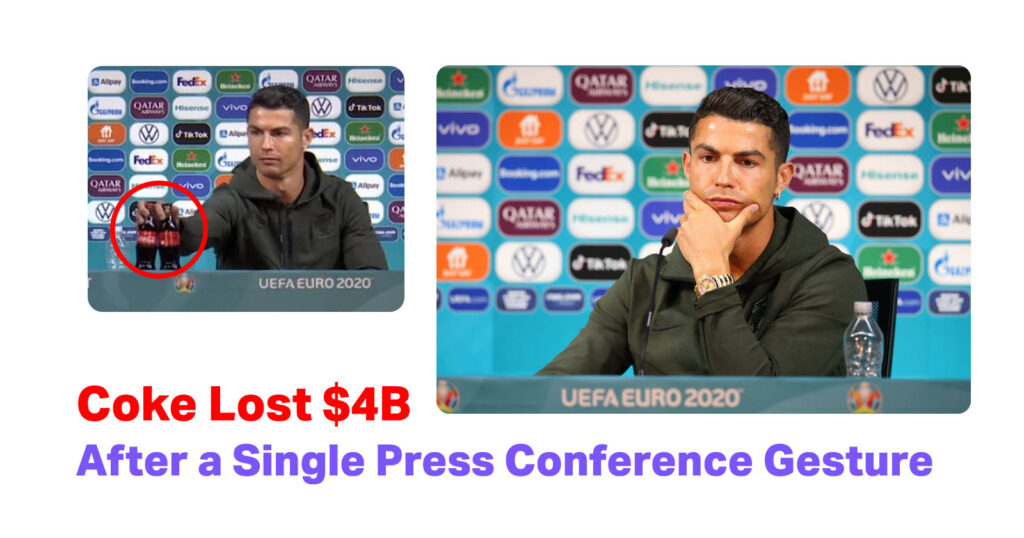
Cristiano Ronaldo’s simple gesture of moving Coca-Cola bottles and saying “Água” during a UEFA Euro 2020 press conference reportedly caused Coca-Cola’s stock to lose $4 billion in value. This incident became a perfect case study for how the role of social media influencers can extend far beyond typical Marketing Campaigns. This demonstrates how much power people believe creators hold over consumer behavior.
- Coca-Cola’s share price dropped from $56.10 to $55.22 at the end of the press conference, a 1.6% dip.
- Coca-Cola’s estimated market value fell from $242 billion to $238 billion, a loss of about $4 billion.
Swift’s Economic Influence
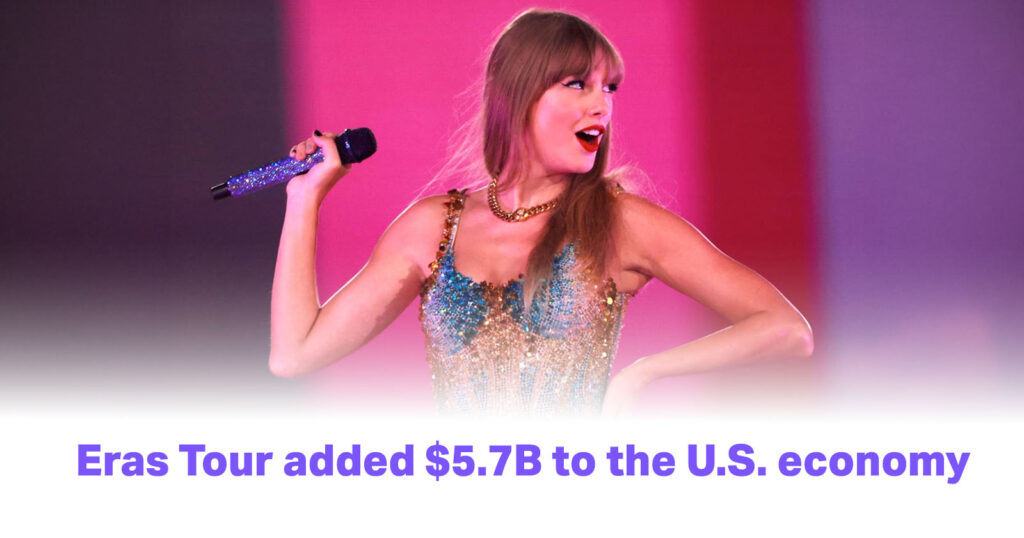
Taylor Swift represents perhaps the most dramatic example of how celebrity influence translates into economic impact through strategic partnerships. Her Eras Tour didn’t just sell tickets; it created measurable economic boosts in every city she visited. Hotels, restaurants, and other Businesses all reported significant revenue increases during her tour stops. This shows how influencers and consumer behavior extend beyond direct product promotion to influence entire consumer spending patterns.
- In Los Angeles, her six-show residency in August 2023 boosted the local economy by about $320 million.
- Cincinnati, during her shows, saw a $48 million increase in economic impact.
- The U.S. leg of the Eras Tour injected around $5.7 billion into the U.S. economy.
- In Seattle, downtown hotels reported a record single-day revenue of approximately $7.4 million, about $2 million more than the previous high.
- The U.S. hotel revenue bump in cities hosting Eras Tour stops was roughly $208 million above normal seasonal levels.
MrBeast’s Innovation
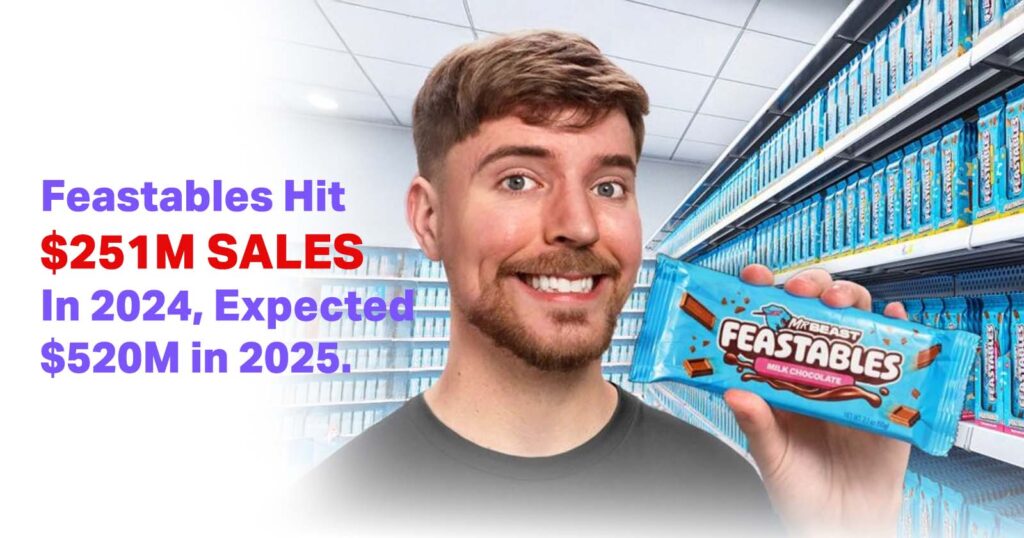
Jimmy Donaldson (MrBeast) has basically created a new model for how creators can directly impact consumer behavior through Content Creation rather than just endorsement. Through his Personal Brand, he has shown us that the impact of influencers on consumer behavior has evolved from simple sponsorship deals to comprehensive brand-building strategies. His Feastables chocolate brand shows how modern creators can leverage their audience to build entire Businesses from Scratch.
- Feastables pulled in $251 million in sales in 2024, with over $20 million in profit.
- In 2025, Feastables is expected to generate $520 million in sales, surpassing revenue from its YouTube/media business.
| Influencer | Audience Size | Business Impact |
|---|---|---|
| Cristiano Ronaldo | 664M+ followers | $4B Coca-Cola market impact |
| MrBeast | 434M+ subscribers | Built a multi-million dollar food empire |
| Charli D’Amelio | 41.8+ followers | Dunkin’ partnership drove massive sales |
| Selena Gomez | 417M+ followers | Rare Beauty reached $1B+ valuation |
| Taylor Swift | 500M+ across platforms | Generated billions in economic activity |
The Psychology Behind Why People Trust Influencers
The human brain is basically wired to trust recommendations from people we feel connected to, and social media has found ways to artificially create those feelings at scale through strategic positioning.
Understanding the psychological mechanisms that make influencer marketing so effective helps explain why this phenomenon has become such a powerful force in shaping purchase intent and influencer relationships.
Parasocial Relationships
When someone you feel you “know” recommends a product, your brain processes it similarly to advice from a real friend, which significantly increases the likelihood of making a purchase. This perfectly illustrates how social media influencer impact operates on a psychological level. People develop genuine emotional connections with creators they follow, even though the relationship is completely one-sided. This psychological phenomenon, called parasocial relationships, makes followers feel like they actually know the influencer personally.
Social Proof
Humans are naturally influenced by what others are doing, especially people they admire or want to be like. 62% of customers say they’re more likely to purchase if they see others have already bought something. When followers see their favorite creator using a specific product, it provides social proof that the product is worth buying.
This is particularly powerful when combined with UGC Content showing other followers also using the recommended products, creating a cycle that amplifies influencers and consumer behavior patterns. At ShortVids, we edit a wide range of Content Types from UGC clips, interviews, and social media videos to Ads and product demos, helping our clients consistently build trust through authentic social proof and highly shareable user-generated content.
Authority Bias
This authority bias makes their product recommendations feel more credible than traditional advertising, leading to higher conversion rates and stronger purchasing decisions. Even micro-influencers are perceived as authorities within their specific niches. Whether someone focuses on skincare, fitness, or tech reviews, their audience begins to view them as experts whose opinions carry significant weight.
Study On Influencers’ Credibility
A study in Saudi Arabia showed influencers’ credibility had a very strong positive relationship with consumers’ intent to purchase. The statistic: in regression models, the credibility of SMIs (social media influencers) was significantly related (t = 10.560) to perceived credibility of the product/service and (t = 4.460) to actual purchase intention.
How Brands Track Influencer Marketing Success
The days of measuring influencer marketing success through vanity Metrics like follower counts are definitely over. Modern brands need concrete data showing how creator partnerships actually translate into sales and long-term customer relationships.
Engagement Rates
Brands now focus on engagement rates rather than just reach because engaged audiences are much more likely to actually purchase recommended products. Research shows that the entertainment value of social media influencers has the strongest association with customer engagement among all attributes studied.
A creator with 50,000 highly engaged followers often drives better results than someone with 500,000 passive followers, proving that the impact of influencers on consumer behavior depends more on quality than quantity. Here are the engagement benchmark rates to expect:
- Nano-Influencers (1,000-10,000 followers) on Instagram often get 4-6 % engagement.
- Micro-Influencers (10,000-100,000 followers) tend to see 3-4 % on Instagram.
- Larger influencers (100K+ followers) usually see lower rates, 1-2 % (sometimes less) on Instagram.
- On TikTok, Nano and Micro influencers can have much higher engagement, often 7-10 %+, depending on content type and virality.
Attribution Tracking
Modern e-commerce platforms make it easier than ever to track exactly which sales came from specific creator partnerships. This data helps companies optimize their influencer partnerships and focus their budgets on creators who actually drive sales through effective collaboration. Unique discount codes, affiliate links, and pixel tracking allow brands to measure the direct impact on their revenue. Here are some attribution tracking metrics:
- Typical Conversion Rate for influencer marketing campaigns is ≈ 1% to 5%, depending on platform, influencer tier, and product type.
- Click-Through Rate (CTR) from influencer links for solid campaigns tends to be ≈ 1.5%-2.5%. Anything above ~2% is viewed as strong.
- Return on Ad Spend (ROAS) benchmarks: Average influencer campaigns: 3 × the spend (i.e. $3 revenue for every $1 spent) as a baseline.
- Performance above that (5-6×) is considered excellent.
Long-term Value
The most successful influencer partnerships focus on building long-term customer relationships rather than just immediate sales. Tracking these metrics helps justify the investment in influencer partnerships and guides future marketing strategies that maximize the role of social media influencers. Brands Track Metrics like customer lifetime value, repeat purchase rates, and brand loyalty among customers acquired through creator partnerships. Here are some long-term value metrics & expectations:
- Customers acquired via influencer campaigns often have ~23% higher lifetime value (CLV) compared to those acquired via other channels.
- Industry average ROI in influencer marketing is around $5.78 earned for every $1 spent (i.e., ROAS of ~5.78) in some cases.
How ShortVids Helps Clients Build Influence and Impact
ShortVids is more than a Video Production Service; we’re a partner in maximizing clients’ credibility and reach through smart content strategy and efficient delivery. One great example is Colin Matthew, a Credit Repair Coach and founder of Freedom Funders.
See how we support Colin Matthew:
- Edit and optimize long-form educational videos and paid ads tailored for the finance niche
- Repurpose core content into short, platform-specific clips for Instagram, TikTok, and YouTube
- Provide AI-generated video ads (avatars, voiceovers, branded assets) for busy professionals like Colin
- Develop Scripts, headlines, and content strategies specifically for credit repair coaching
- Suggest trending topics and campaign ideas focused on trust-building and lead generation
- Deliver hands-off, ongoing content support to maximize influence and authority.
Result?
Would you believe if we tell you this Ad is 100% AI, perfected with our expert team at ShortVids:
By combining creative strategy, human expertise, and AI-Powered Content Creation, ShortVids helps clients build genuine influence and results, boosting the social media influencer impact and driving effective influencer marketing campaigns.
Future Trends: Where Social Media Influence Is Heading
The field of creator marketing continues shifting quickly, with new technologies and platforms changing how creators connect with their audiences and drive purchase intent. Understanding these emerging trends helps predict how influencer marketing will continue shaping consumer behavior in the coming years.
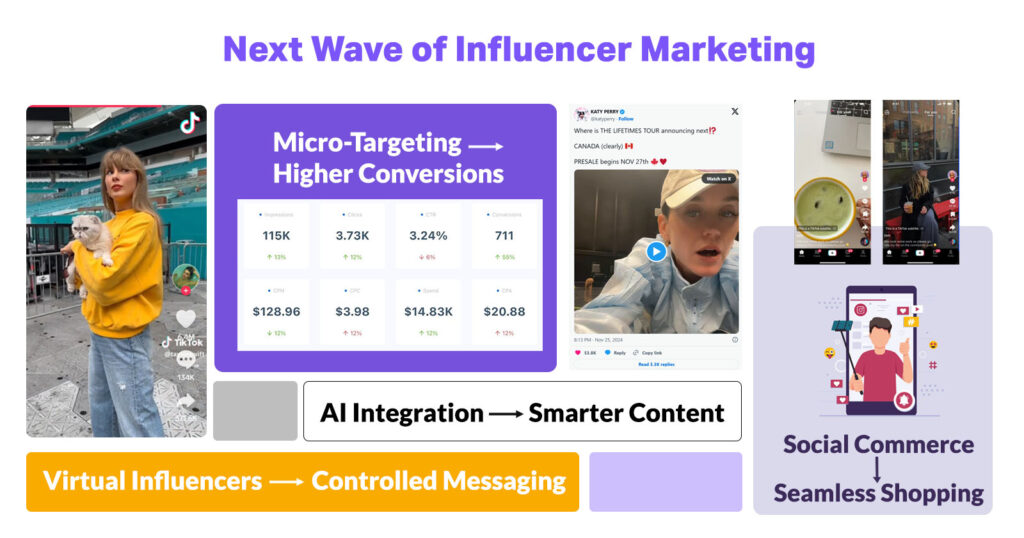
AI Integration
Artificial intelligence is already starting to change how influencer content gets created and distributed. Some creators are experimenting with AI-generated Content, while platforms use machine learning to better match sponsored content with interested audiences.
However, the human connection remains the core of creator marketing success, so AI will likely enhance rather than replace authentic creator content that drives behavioral patterns, and at ShortVids, every AI-assisted result is reviewed by real editors to make sure authenticity and quality remain central.
Virtual Influencers
Computer-generated influencers are gaining traction, particularly in fashion and beauty markets. This trend represents an interesting evolution in how brands think about the impact of influencers on consumer behavior.
While they can’t replace the authenticity that makes human creators so effective, virtual influencers offer brands complete control over messaging and eliminate many risks associated with human partnerships.
Micro-Targeting
Advanced analytics will help brands identify nano-influencers whose audiences perfectly match their target demographics, leading to higher conversion rates and better ROI from influencer partnerships that maximize purchase intent and influencers’ effectiveness.
Future creator marketing will probably become even more precise in matching specific products with exactly the right audience segments.
The integration of shopping features directly into social media platforms is making the path from discovery to purchase even smoother. Instagram Shopping, TikTok Shop, and similar features allow users to buy products without ever leaving the social media app, which should significantly increase conversion rates from creator recommendations while strengthening the role of social media influencers in the purchasing process.
Your Takeaway!
The massive change in how creators shape consumer behavior and purchase intent is only accelerating. From household names like Ronaldo making headlines with billion-dollar product moments, to everyday creators driving steady sales for brands they genuinely use, the landscape is shifting fast. Video production agencies like ShortVids are thriving by forging authentic partnerships with creators who actually understand and relate to their audiences, while others are still learning that traditional ads don’t cut it in today’s influencer-driven world.
Frequently Asked Questions
Social media influencers shape consumer behavior by offering authentic, trusted recommendations that resonate more than traditional ads, driving higher purchase intent and stronger brand loyalty.
Influencer marketing leverages relatable voices and genuine storytelling, which creates emotional connections and trust, making consumers more likely to act on influencer recommendations.
Micro and nano-influencers typically deliver higher engagement and conversion rates than mega-influencers, due to their personal, trusted relationships with tightly knit audiences.
ShortVids supports clients like Colin Matthew by editing, repurposing, and generating AI-powered video ads, plus providing niche-specific scripts and content strategies to boost influencer marketing success.
Book a Call Today
- Fixed monthly plans starting at $999
- 24-hour turnaround time (or less) on all short-form edits
- 3-layer quality check system on every video
- No more chasing freelancers or managing editors
- Scale up to 50+ videos/month without hiring in-house
- Content team trained on platform trends, scroll-stopping hooks & storytelling
- Fully managed by professionals – you just upload & approve
- Response time: Under 1 hour (US & GCC time zones)
Cut your production costs, not your standards.

